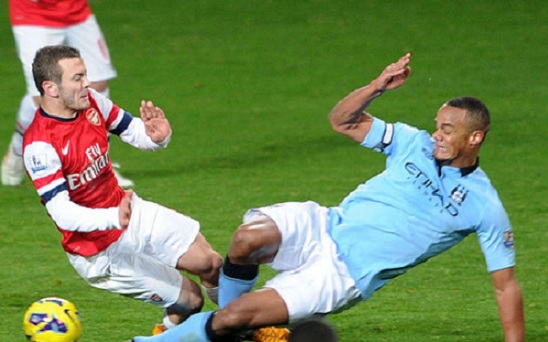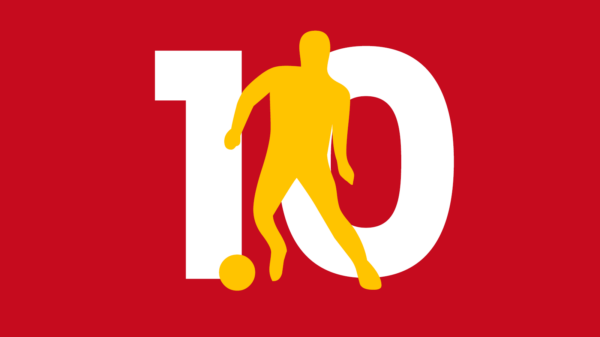A curious phenomenon that makes football unique in a lot of ways is the sliding tackle. Intended to be a tool for a defensive player to win the ball off an offensive player with the help of momentum in order to cover a large area while moving faster. It has often been a cudgel that has maimed and injured talented forwards. Due to this nature of the sliding tackle, and its subsequent results, recent times have seen several calls for a ban on the tackle.
Arnab Ray
Football always has been and hopefully, always will be a contact sport. Regardless of disparaging comments about any team’s playing style (more often than not containing a snide reference to rugby), football revels in its diversity. From the ‘aesthetically pleasing’ tiki-taka of FC Barcelona to the comparative brashness of a ‘cold night at the Brittania’, football boasts of a multi-faceted nature. And long may that continue.
The purists can talk about beautiful football all day long but football is not supposed to be played in a specific manner. It is open to interpretation, and contrasting styles are a major part of the game that we have come to love. In fact I would even stick my neck out and say that if every team played in the same style, football would be all the more poor for it.
Personally, I’m not a big fan of the general style of play that relies on the more physical side and don’t really think I would like to see teams kicking chunks out of each other for 90 minutes. But I do enjoy the odd crunching tackle or two. For example, Old Trafford has been the venue of some top quality football this season but the one sequence of play that stood out for me was the following-
The reason is quite simple. It had been a long time since I’d seen a prolonged sequence of well executed, honest and hard tackles.
So why exactly has tackling become more an exception than the norm as it used to be? Well, firstly the game has evolved. The days of the Keanes and Vieras patrolling the centre of the park and dishing out crunching tackles at will have gone. The role of the enforcer has changed to a midfielder who reads the play well and is more likely to intercept the ball than to send the opponent sprawling with a well timed sliding tackle, a la Michael Carrick.
Another reason is the crackdown on dangerous tackles. Any tackle that is deemed dangerous by the referee results in a straight red followed by a three match suspension. As soon as both legs leave the ground, you know its time for an early shower. The strictness can be understood as nobody enjoys seeing a professional footballer badly injured. However, the flip side is that hard but fair tackles, such as Vincent Kompany’s the past weekend, are misconstrued as dangerous.
The fact that a few players have seemingly taken it upon themselves to try and honour the sport of synchronised diving on a football pitch has not helped the current situation one bit.
I am not advocating rough tackling and potential leg breakers. All I want is for tackling, which has been an integral part of the game for many years, to be able to retain its rightful place in the sport. Is football a dying art? I, for one certainly hope not.
Vishal Patel
As per my understanding of the rules, any tackle that is ‘dangerous’, i.e. two footed, above the ball, and late, is a one way ticket to an early shower, and rightly so. These are the monsters that ruin careers and cause long term damage. There doesn’t seem to be much of a debate about these tackles.
The conundrum arises with the lesser monsters, the ones in the gray area that become tough for the referee to judge and bring into account his discretion. Often, in cases of discretion, each incident is evaluated in isolation, and therefore, on comparison with decisions by other referees, or even the same referee in the same game, fans and pundits alike get the stick of favouritism to beat referees with. Moreover, the recent spate of leg breaks has led to even stricter policing of the sliding tackle. Such factors have led many to question the place of the sliding tackle in the modern game.
INJURIES
The first thing we must understand in relation to injuries is that the risk of injury is omnipresent, and it can happen to any footballer, at any time. After we consider this, we can see that injuries, however unfortunate are no reason to take the tackle out of the game, after all, football is a contact sport. The only reason people consider that the tackle needs to be removed after an injury is that the media hype leads to antagonized fans. Apart from this effect on the fans, the condemnation of the ‘guilty’ party by the media may also discourage players from sliding into a challenge. The fear of an adverse reaction, and being made a pantomime villain in the public eye can drive many a good tackler away from a tackle. This intense scrutiny has possibly contributed to the fewer tackles we see now.
RULES
For once, I’d say FIFA have deserved some praise for the rules on this issue. In the past, with two footed challenges not being illegal, unnecessary roughness, and some poor challenges were part and parcel of the game. However, the new rulings have taken this ugly aspect of the game out, while preserving the key elements of a good strong challenge. Obviously, there will be some confusion as to the interpretation of the rules, but the intentions behind them are very clear, and have, on the whole reduced tactics that involve ‘kicking a player out of the game’. A good example would be the Vincent Kompany red card against Arsenal this weekend. While it appeared to be a horrendous lunge at first, replays showed that it was a perfect tackle. Strong, measured, well timed and directed, the City captain clearly took the ball. While he also got a bit of the player, he has to be forgiven for it as we play a contact sport, such contact is bound to happen in the course of a match, be it at Premier League level, or amateur level.
TECHNIQUE
The biggest argument against the sliding tackle, especially one propagated by the dinosaurs disguised as pundits is that the players simply do not possess the technique anymore. Anyone who feels that way should probably see the likes of Puyol, Chiellini, Mascherano and Bonucci in action. It’s a well-known fact that players today are far better technically than those of yesteryear. The only reason we think that tackling as an art has declined is that the bad ones are highlighted and replayed from time to time, but the good ones are barely ever highlighted, let alone appreciated. Tackling is a very tough skill to master and it really is a grave injustice to its proponents to be dismissive and penalize them for it’s successful execution.

Bonucci’s tackling record in a 1-0 defeat to Milan from earlier in the season. A brilliant 8 attempted tackles. Click here to view match centre on Squawka
The second technical and tactical reason for us not seeing as many tackles now is the change in the styles of play. In the past, we were used to seeing defenders defend, and forwards attack, however, there is now a paradigm shift in the way roles and jobs are defined. Each player of the team is expected to contribute his bit to both, defense and attack. This has led to teams defending as a unit and closing spaces down. As teams increasingly defend I this manner, the area that needs to be covered by each man reduces drastically. A sliding tackle is basically a way for a defender to win a ball that he wouldn’t reach by stretching in a normal fashion. If, however, the defender has to cover less area, the need for him to slide vanishes. This can explain the increased number of interceptions one gets to see.
All in all, the art of the tackle is certainly not dead; at least not with the players, and as fans, it’s important that we recognize this facet of the game, and show our appreciation to the individuals who practice this. As far as injuries due to tackles go, we have to understand that the risk is always going to be there, and not just victimize and hate the Ryan Shawcrosses of the world.


























































